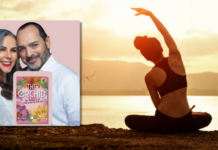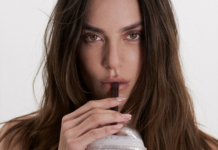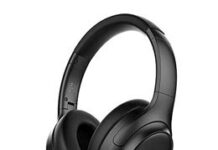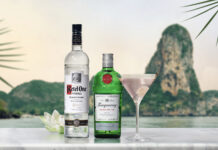Perfect Wines for the Season. Fabian Revol’s Domaine de Brau brings ‘Light, Drinkable Wines’ from the South of France to the World.
Founded by Fabien Revol and Guillaume Mauffrey, Domaine de Brau is a pioneer in organic wine making. Creating craft quality wines that are easy to drink.
Located in the south of France in Occitania, vines have been cultivated here for over 150 years.
Can you share a favorite memory that included celebrating with wine?
Definitely. It’s probably when I was 12 years old. It was the first time my parents let me taste a very expensive burgundy wine. It was for my birthday. I was in a 3 Star michelin restaurant, it’s called The Peak. It’s a very old family now. The daughter, she’s also a 3-star chef. It was with my grandparents; it was an amazing celebration. I still remember that moment.
What about the bottle made it so memorable? Or was it the occasion itself?
The occasion’s context allowed me to remember the wine perfectly.
That’s beautiful. Your website says, “French expatriate friends, wine enthusiasts wanted to embark on an entrepreneurial adventure that resembles them. Guilerme Maufley ….. is synonymous with sharing and discovery. So with that in mind, tell me a bit about your friendship, your partnership, and I’m gonna say the adventure that is Brau Winery.
How do the two of you meet and how do you work together in this winery?
Guilermme and I met when I was living in Hong Kong 20 years ago. We happened to live in the same building in the dodgy area called Yamatai. And we were fond of finishing the week by sharing a glass of red wine. We became friends and we started a small business at that time. Eventually life moved us apart. But, he’s the godfather of my daughter. And when I decided to embark on this crazy project of purchasing a vineyard, I called him and say, ‘well, Guilermme, you remember when we were sharing that glass of wine? We’ll say one day we’ll have a vineyard. Let’s do it.’ And this is how we shared the entrepreneurial project.
We did not have enough funds to purchase the land. You need 70% upfront cash in France when you want to purchase an agricultural business. So we had to initiate fundraising. We organized events with friends and friends of friends. That way we raised sufficient money to close the fundraising. Before I segue further into the region, you mentioned your background a bit about hospitality and working in kitchens.
Can you tell a little bit about the kitchen experience and the kind of places you’ve worked in and what you learned from it?
I started with the family business where we had Bistros, Brasseries, very traditional French style restaurant. Then they also had like Caribbean restaurants. I worked in gastronomy star restaurants to make some money on the summer. I worked when I was 18 years old in a diner in New Jersey as a busboy, so I made my first dollar over there. I was not selling wine, it was more Coke and Sprite, but not wine.
I started my career working in China where I was managing restaurants for the industrial area; industrial companies, manufacturing for schools. I was working with people doing Chinese food. Ultimately I moved to the Middle East where I was preparing food for the airplane for Qatar Airways. Preparing food for the construction company or the oil platform. It was interesting because my team and I had to prepare food for people from India, people from Asia, people from from Middle East.
It was fantastic because it opened the view you have on the perception of Aroma. That really helped me when I moved to wine in opening my views on how someone from a different culture with a different food background, with different habits can perceive aromas.
I hear these exotic destinations, France, the Middle East, Asia. Then New Jersey?
How did Jersey become part of the story?
By chance. In high school we had an exchange program between countries. My high school was organizing an exchange with a small town in New Jersey. The guy I was partnering with, his family was in the food business. So when I went there and when he came to France, we were spending a lot of time with our parents in their restaurants. They said, ‘Do you want to work the summer in the US? I say, of course.’ So I spent several months working there and it was fantastic. Bridgewater, New Jersey.
Let’s switch over to the south of France and the wine region that you’re planted in.
Can you tell us about the region and how the terroir effects the aromas and the taste profile of your wines?
We are in the southwest part of France, nearby a city called Carcassonne. It’s a medieval city. It’s where the movie with Kevin Costner, “Robin Hood” has been shoot. Carcassonne is 80 kilometers from the Mediterranean Sea.
It’s in a corridor between Atlantic and Mediterranean Sea. On the left part, the Pyrenees Mountain and on the right part, a black mountain. And therefore it’s a very interesting area because we are exactly at the border of two climates, one Mediterranean climate, and one Atlantic climate. So we have two influences.
We have a lot of wind. It’s hot, cold, windy, and we have the freshness of these two mountains. So this allows us to grow a variety of varietals. We have Mediterranean varietals like Syrah, like Grenache. We do have Atlantic varietals, like Merlot, like Cabernet Sauvignon, like Cabernet Franc.
On top of that we have some more esoteric varietals like, Fer Servadou or Caladoc. These are varietals that you find only in these areas. So the terroir here is more calcareous, and schist. We are in what we call the Languedoc parts of Southwest of France. Usually Languedoc is known for having an important sunny influence on the wines.
But, Brau, we are located on the north part of Languedoc.
Because we are really close to this black mountain, it give us a lot of freshness. So we are doing wines that are very fresh, low in alcohol located precisely on appalachian, AOP, called Cabardès is one of the smallest appellation in France.
It’s only 28 winemakers — women and men. The scope, the requirements for this appalachian, is unique in France because it requires that when you want to make this wine, it requires you to have 50% of the grapes that comes from the Mediterranean area and 50% from the Atlantic area.
‘So basically you must have, like Syrah and Cabernet blends together to have a Cabardès. So another particularity of the area is that many winemakers like me, we like to have the AOP approach, which is a bit more traditional and is asking you a lot of technical requirements.
At the same times, we have the freedom to do a lot of different types of wines, not under the AOP label, but are in as a Vin de France. Here with Vin de France. This is where I do like natural wines, where I do single varietal and other kinds of wines.
Sounds like some things you stay more traditional and some you have a little more fun with?
Exactly. This double approach is actually more and more developed by the young winemakers because originally majority of the people were doing the more traditional AOP approach. Now we have seen that consumers have different moment of consumption. You may want to maybe to start with a very light and very easy to drink wine, which will be a single varietal, and as the dinner goes on, you want a more full body wine, more complex, and this is where you will choose an AOP for instance.
My next question is about process.
Can we pick out 2, 3, 4 of your wines and just talk about the taste profile and how they were produced?
Absolutely. I like to start with an original one. A Cuvee called ‘Number One Regain‘.
It’s 100% Pinot Noir. It’s vinified in a natural way. So there is zero additives, there is no fining. It’s indigenous yeast. And the particular with that, because you don’t have any sulfite, you have a risk during vinification of oxidization because the wine is not protected. So to minimize that risk, you bottle it very early. With Regain we harvest end of August and end of December, we bottle it. Because of that, you won’t do very long vinification process or aging, and therefore your wine will have some very crispy, very fruity wine.
We used to say in French “gloo-gloo”.
“Gloo-gloo” wine, you know, it’s easy to drink. I like this cuvee because of the freshness. Also it’s low in alcohol, only 12.5 alcohol. So it’s very easy. Then we do have the mother of Regain which it’s 100% Pinot Noir in a range we call Terre de Brau.
And that one has a minimum of one year of aging in concrete tank. So the grapes come from the same plots, same harvest by hand. However, that one will take time to age, the aromas will be much more complex. The alcohol will be stronger. It’ll be more on the black cherry aspect. Stronger. So it’s interesting usually to compare these two cuvee because you can see that the vinification process gives you something totally different.
Cuvee called the Caladoc
Then we may talk about a Cuvee called the Caladoc. So it’s a 100% Caladoc. It’s a single varietal Caladoc. It’s a cross-varietal between Malbec and Grenache Noir. It’s usually used in the blends. In some Cote Du Rhone blends. Very rarely you will see Caladoc red alone. You can see Caladoc as a rose’ but not alone. Here we have the chance to have a very fruity, like a black currant flavor. We vinify it also with concrete tank to keep the freshness. I don’t want to blur the aromas with wood. It remains very dark, fruity, with a little bit of tannin, but not too much. Again, low in alcohol, 12.5% Uh, and the Caladoc cuvee is usually the one that strikes everybody around the table, even the people who are not big wine drinkers.
Cuvee called Meditation
And maybe to finish I have a particular crush on a Cuvee called Meditation. I call it that because it’s one of my wife’s favorite cuvee’s; and she’s a yoga teacher and a traditional Chinese medicine doctor so she’s into that. Meditation is a very delicate, elegant, light red wine. A blend of Syrah which brings you the fruitiness with the pepper. And Fer Servadou. So Fer Servadou, is one of these esoteric varietals that gives you a metallic feeling and a bit of rustiness. The blend of two is amazing because it creates a third flavor, which is more of the pink, red juice aspect.
For several of those wines, you mentioned the low alcohol. What influenced your choice on that?
What I see and what I like is that people are more and more inclined to test different things when they drink wine. When we drink usually you like to have a beer maybe to start, and you want to have a glass of white wine. Maybe you want to have a glass of red; and maybe a stronger red. T
o allow that, if you have too much alcohol it’ll really change the perception and what allows you to appreciate it.
Also, it’s something that is demanded from the market. Uh, many of my clients, distributors and importers, they are asking me for lower alcohol. It’s also part of the DNA of our wines because we are really doing very fresh wines. When I do fresh, when I say fresh and easy to drink, it’s also, I want something where you drink one glass and you are able to say, “I can drink the bottle.”
But you have some wines, it’s harder. It’s like 14, 15, 15.5% alcohol. You drink one glass, you know you won’t finish the bottle. But to reach that, you also need to harvest early. You need to harvest at nighttime. You need to decide whether you keep the leaves or whether you remove them at a certain times in order to protect them from too much sun. There are a lot of actions that will influence your capacity to reduce your level of alcohol.
From harvest, because you’re choosing to pick early, is that a constant concern or because you’re so used to it, it’s not that big of a stress for you?
For sure it’s a big stress. When I look at some of my fellow winemakers who have 50 years of experience, it remains a big stress. So I wish one day it wasnt anymore. The thing is, every year it’s different. Every year the weather is different and the vines are behaving differently. For instance, the past summer, 2022 was, in Europe it was very dry and very sunny. So that developed something interesting because at a certain time, the vines protected themselves and decided to stop bringing the juice, the resource to the grape. They wanted to physically protect the grains inside the grid, because the grains are their seeds and this is how they can protect and continue their longevity. So natural protection, okay, you protect the seeds.
Therefore, the skin of the grape was not thick because they didn’t put energy on the skin.
So this year, 2022, the color was very light because the color comes from the skin. Also the balance between acidity and alcohol was very complex because we didn’t get a lot of juice and we didn’t get very thick skin. So obviously we had to adapt and that was very specific of this year compared to last year.
So my next question is about food and wine and food pairing.
But I feel like if you name five bottles, there might be five different great pairings
Usually in general, as I told you, I lived in different countries, in Asia and Middle East. Therefore, I like the spice; and a tannic wine will go well along with spices. So if I take a Syrah for instance. I have a friend who has several Asian restaurants in France. My best sales in his restaurants are the Syrah because Syrah can sustain the spice. And it is a bit spice itself with the peppery aroma. So, every time there is something with a bit of spice, I will go with Syrah because I know it’s a safe choice.
Then after, I told you about the Regain Pinot Noir natural vinification wine. It is very crispy, very light, and Pinot Noir doesn’t have tannin. So it’s the opposite of Syrah. I like it fresh. So chilled out from the fridge, a bit chilled with sea urchin. If you take sea urchin with Regain, it’s kind of light Pinot Noir a bit crispy.
It’s a superb match because the saltiness of the urchin along with the very soft, gentle meat. With Cuvee Meditation, usually you do not cook veal with very spicy things or very heavy things. It’s good to match it with a very light and delicate wine. It’ll enhance the delicacy of the meat.
I almost always pair wine and food. I rarely drink wine just by itself, but I recognize, in France, it’s often just wine by itself, right?
Yes and no, because the trend now is to have more tapas, appetizers. So a lot of small things, it’s not the formal dinner. Therefore, we like to have wines you can drink easily. There’s more and more wine bars, therefore not necessarily matching with food.
So as we wrap up, you’ve us 30 minutes of your time. Thank you. Tell us how to learn more about your winery.
Tell us where we can go to browse your bottles? Where can we find you?
Brau Winery is the oldest organic winery in France, certified winery in France. We are exporting in 14 countries: Asia, Europe, and now we are starting in the US. We’ve been distributed in New York at Astor wine on Lafayette Street. Developing distribution in different states and expanding the distribution in New York. So we are on the early stage of distribution in the US. Everywhere we are successful is when we have a woman and a man who understands and is as passionate as us on explaining our wine DNA story.
Fabian, thank you so much for your time. Before we go, is there anything that we haven’t discussed that you’d like to add to the conversation?
Social networks like Instagram have changed the relationship people have with wine and winery and winemaker. We are quite active on Instagram. We have a Brau wine account. It’s amazing to see how it has creating connection and proximity and a fantastic way for us to explain all the aspect of our business, and what we are doing. It’s really interesting andI think it has helped a lot of new wine drinkers, a new generation to have a different perception.
Has there been any memorable or unique experiences?
Definitely. One lady from California was traveling near Carcassonne last summer. On Instagram, she was following us. She sent a message and I invited her with her husband. We spent all afternoon and the next day together. I brought them to a restaurant and we became friends. That was very nice. Very fantastic. Absolutely. I
t’s the same with Google. We are close to a very touristic place. A lot of people use Google to recommend when they want to visit vineyards. And we are very well ranked on Google with more than hundreds of comments from people from around the world. And that brings so many tourists from all the nations to our tiny, tiny vineyard. Without Google, you would never have people from China, from the US, from South Africa.
That’s beautiful. All right, one more time. Thank you so much for your time.

































